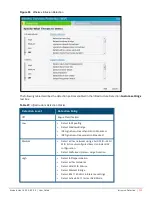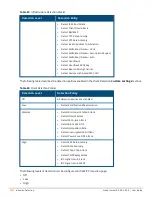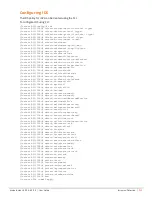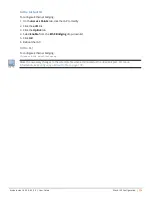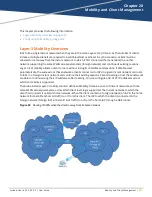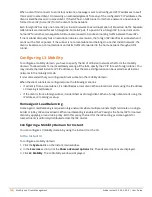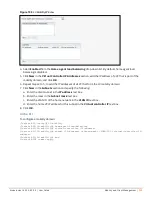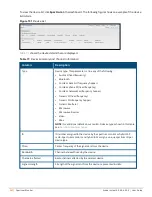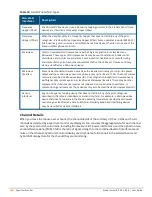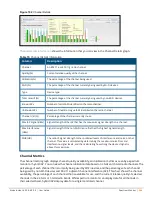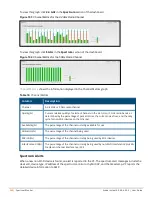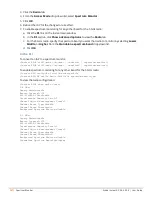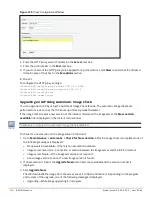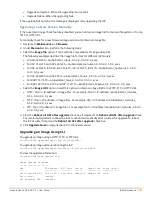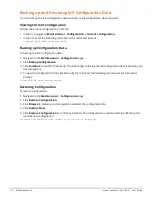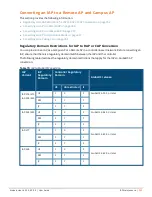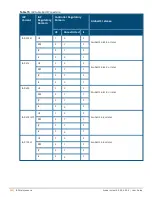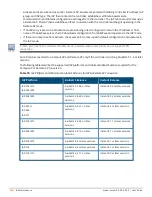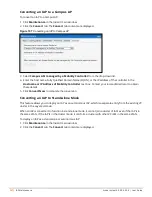
343
| Spectrum Monitor
Aruba Instant 6.5.0.0-4.3.0.0 | User Guide
Non Wi-Fi
Interferer
Description
Frequency
Hopper (Xbox)
The Microsoft Xbox device uses a frequency hopping protocol in the 2.4 GHz band. These
devices are classified as
Frequency Hopper (Xbox)
.
Frequency
Hopper (Other)
When the classifier detects a frequency hopper that does not fall into any of the prior
categories, it is classified as
Frequency Hopper (Other)
. Some examples include IEEE 802.11
FHSS devices, game consoles, and cordless/hands-free devices that do not use one of the
known cordless phone protocols.
Microwave
Common residential microwave ovens with a single magnetron are classified as a
Microwave
. These types of microwave ovens may be used in cafeterias, break rooms,
dormitories, and similar environments. Some industrial, healthcare, or manufacturing
environments may also have other equipment that functions like a microwave and may
also be classified as a Microwave device.
Microwave
(Inverter)
Some newer-model microwave ovens have the inverter technology to control the power
output and these microwave ovens may have a duty cycle close to 100%. These microwave
ovens are classified as
Microwave (Inverter)
. Dual-magnetron industrial microwave ovens
with higher duty cycle may also be classified as
Microwave (Inverter)
. There may be other
equipment that functions like inverter microwaves in some industrial, healthcare, or
manufacturing environments. Those devices may also be classified as
Microwave (Inverter)
.
Generic
Interferer
Any non-frequency hopping device that does not fall into any of the prior categories
described in this table is classified as a
Generic Interferer
. For example, a Microwave-like
device that does not operate in the known operating frequencies used by the Microwave
ovens may be classified as a
Generic Interferer
. Similarly wide-band interfering devices
may be classified as
Generic Interferers
.
Table 72:
Non-Wi-Fi Interferer Types
Channel Details
When you move the mouse over a channel, the channel details or the summary of the 2.4 GHz and 5 GHz
channels as detected by a spectrum monitor are displayed. You can view the aggregate data for each channel
seen by the spectrum monitor radio, including the maximum IAP power, interference, and the signal-to-noise-
and-interference Ratio (SNIR). SNIR is the ratio of signal strength to the combined levels of interference and
noise on that channel. Spectrum monitors display spectrum data of all channels in the selected band, and
hybrid IAPs display data for the channel they are monitoring.

